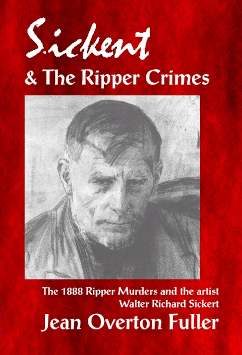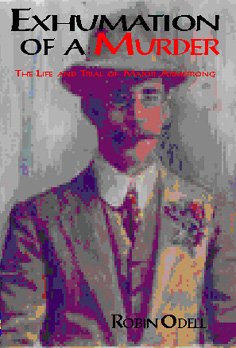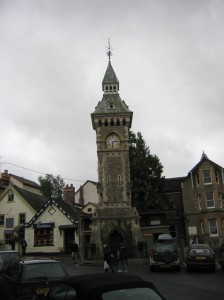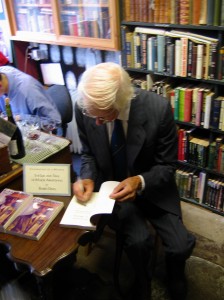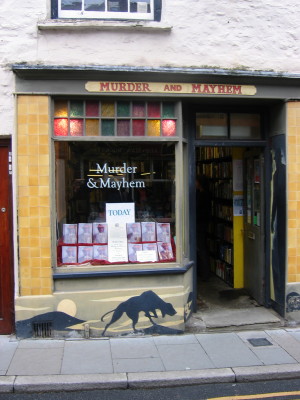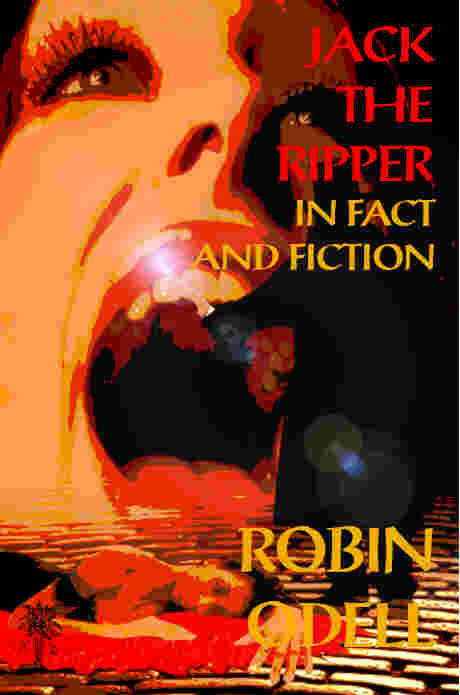The Life and Death of Emily Dimmock
John Barber
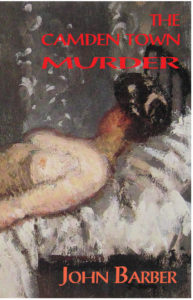
The Camden Town Murder
The Life & Death of Emily Dimmock
John Barber
Format: Softcover
ISBN: 9781869928919
£15.00/US$22.00
Subjects: True Crime / Criminology.
Click HERE for The Camden Town Murder / UK
Click HERE for The Camden Town Murder / USA & AUS
Kindle UK Edition
Kindle USA Edition
“Her throat was cut, from ear to ear; her head almost severed from her body.’
On the morning of September 12th 1907, the body of Emily Dimmock was found in her rented rooms in Camden Town, London. The murderer has never been identified.
EMILY DIMMOCK followed the tragic fate of so many poor working class girls, by working as a domestic servant and then as a prostitute in London’s notorious King’s Cross area.
This is the story of the victim; along with an account of the times in which she lived, and the circumstances surrounding her death. Is this another crime of the imagination? Recent books have seen parallels between The Camden Town Murder, and the Whitechapel killings of Jack the Ripper, and the Peasenhall Mystery of 1902.
In THE CAMDEN TOWN MURDER, John Barber presents the reader with a modern day investigation, analysing and retracing the events with the story’s protagonists, with previously unpublished letters and a new interpretation of the forensic evidence.
This is also a social history and an account of the human condition of the people living in the Victorian and Edwardian eras: the upper classes and their domestic servants, the labouring poor, the ‘fallen women’, the music-halls, the artists, and the demi-monde. All these moving against alternating backgrounds of greys, black and crimson, and enraptured with the vapours of wormwood.
The Author: John Barber is a researcher and writer, whose published works include a collection of absorbing murder mystery novels. His popular and informative website, features books, articles, & gazeteers on the socio-cultural history of Britain and its great metropolis London.
www.johnbarber.com
**************
REVIEWS
**************
WALDEMAR JANUSZCZAK’s article on THE CAMDEN TOWN MURDER
in THE SUNDAY TIMES
www.waldemar.tv/2007/11/walter-sickert-murderous-monster-or-sly-self-promoter/
Review as featured in the Hertfordshire Mercury
‘Author usurps crime queen’s Ripper theory. A Hertford author has slammed crime writer Patricia Cornwell’s theories on Jack the Ripper in his latest book. John Barber, who is also the town centre manager, has penned The Camden Town Murder and is due to take part in a BBC documentary about the killer. In his book he pours cold water on the American crime queen’s speculation that a girl from Standon was the last victim of the Victorian serial killer. Ms Cornwell spent a fortune trying to prove that prostitute Emily Dimmock was killed by artist William Sickert, whom she believes was the Ripper. But John, 59, who has been researching the circumstances around Emily’s tragic death, claims Ms Cornwell has wasted her time and money. In the chapter entitled ‘Was Emily Dimmock a Ripper Victim?’ he writes: “In attempting to answer this question, one problem springs to mind. Why was there a gap of 19 years between the murder of Mary Kelly [a Ripper victim] and Emily Dimmock?”Surely a serial killer kills and then kills again until he is caught or dies. Rarely do they wait 19 years to strike. Yet this is what Patricia Cornwell would have us believe.”John, who lives on Folly Island, told the Mercury: “Ms Cornwell has got it wrong. It’s highly improbable that Emily was the Ripper’s victim.”Her throat was cut but the Ripper’s trademark was tearing open vital organs and sometimes taking body parts.”Sickert might have been the Ripper but he didn’t kill Emily – you’ll have to read the book to find out who did.”John, who has admitted that his fascination with the Ripper and Emily’s murder became an “obsession”, has been asked to take part in a BBC documentary on Sickert.He will take a film crew around north London and Whitechapel, in the East End, to the key sites of the Ripper attacks and the Camden Town murder. TV prankster Jeremy Beadle has already snapped up a signed copy of the The Camden Town Murder, which is available in Waterstones, Foyles, W H Smith, Barnes & Noble, Tesco and through Amazon. It is published by Mandrake.’
Review as featured in NW1 Magazine the groovy magazine for Camden.
The Camden Town Murder
By John Barber
‘ On the morning of 12 September, 1907, Bert Shaw returned to the lodgings he shared with his 22-year-old partner Emily (‘Phyllis’) Dimmock at 29 St Pauls Road (now Agar Grove). Unable to gain entry, he borrowed a key from his neighbour, opened the door and discovered Emily’s lifeless body lying on the bed. Her throat had been cut almost from ear to ear and her windpipe virtually severed. Her killer has never been found. The background to this gruesome murder, and its very public aftermath, is detailed in a new book, The Camden Town Murder.
Emily, a prostitute, was last seen the previous evening drinking with the principal suspect Robert Wood in what was then the Eagle public house and is now Mac’s Bar on the corner of Royal College Street and Camden Road. Wood was tried at the Old Bailey but, thanks to the efforts of Marshall Hall, England’s finest criminal defence barrister, he was acquitted on the grounds that he could not be placed at the scene of the crime and had an alibi. Although the author argues convincingly that Wood is still the most likely suspect, he does entertain other possibilities.
He has obviously carried out extensive research, and he identifies several other men who could have committed the crime, most notably the artist Walter Sickert, who must have known Emily as they both often frequented the Old Bedford Music Hall (demolished in 1969, now Bedford House, 123-133 Camden High Street), where Sickert used to sketch and paint the performers. Sickert is also suspected by many conspiracy theorists, in particular the crime novelist Patricia Cornwell, as having been Jack the Ripper and also having killed Emily, although there appears to be little direct evidence that this was the case. In any event, the modus operandi of Emily’s murder differed significantly from that employed by the Ripper. However, Sickert was apparently deeply upset by her death and embarked on a series of sketches and paintings called the Camden Town Murders, the best known of which – ‘what shall we do for the rent?’ – shows a young woman lying on her bed, in exactly the position in which Emily was found by the police. This painting is on the cover of the book.
Reading about true crime can be an unhealthy pastime, as writers and publishers tend to stress the lurid and sensationalist aspects, motivated no doubt by the public’s morbid interest in such matters, and thereby increase sales. This book, however, is forensic rather than febrile in tone, and dispassionately assesses the evidence for and against the various suspects. It will be of interest to students of crime and also to those seeking an understanding of the morality and underworld of Camden life in the early 20th century.’
– Rab MacWilliam in NW1 Magazine
–
Article feature in the Camden Gazette
‘Writer believes he has solved century old murder mystery’
nlnews@archant.co.uk
14 March 2007
‘Author John Barber spent years researching the book after growing up opposite the scene of the murder in what is now Agar Grove. Picture: Rob Bourne.
A murdered prostitute, a blood-stained bowl and an artist who cheated the hangman’s noose make up a 100-year-old Camden Town riddle a writer may have finally solved.
The 1907 murder of Emily Dimmock shocked the nation – especially as the murderer was never caught, although some believe that Jack the Ripper was responsible.
BERT Shaw – the partner of victim Emily Dimmock at the time of her death in 1907
Now writer John Barber – who grew up opposite the murder house in modern day Agar Grove and spent years writing The Camden Town Murder – thinks he has got to the bottom of the mystery.
He says a modern day jury would probably have convicted local artist Robert Wood – despite the fact that he was cleared of the crime by a court a century ago.
Mr Barber said: “One hundred years later it is very difficult to be sure, but with all the evidence available I have been able to point the finger at someone. Robert Wood was brilliantly defended at his trial but I think his alibi would have been shown to be false by a modern investigation.”
Mr Barber also hopes the book may bring some peace to the family of the murdered woman’s partner Bert Shaw. He said: “Bert Shaw’s family always talked about the murder in a hushed whisper. It was a dark secret but I think he had nothing to do with it. I hope the book gives a bit of peace to the family.”
Bert Shaw’s distant relation Alan Stanley – now 58 – remembers meeting his great uncle in the 1960s. He said: “In my childhood I vaguely knew there had been some sort of murder in the family. People referred to it without ever explaining what it was all about. I remember the fact that the murderer had washed his hands in a bowl and left blood-stains behind. Uncle Bert was old fashioned and always wore his suit even in the home. He was the first to come across her naked body lying with her throat cut – it must have been horrific. I don’t think anyone in the family ever thought he was the murderer.”
